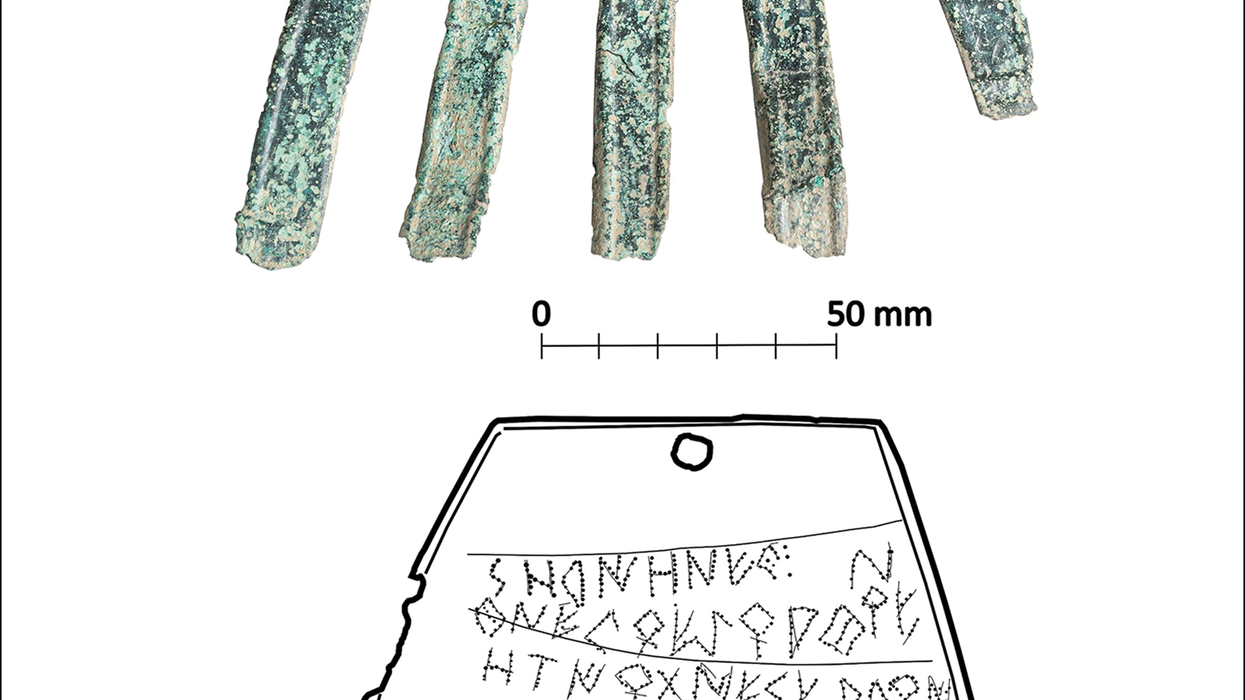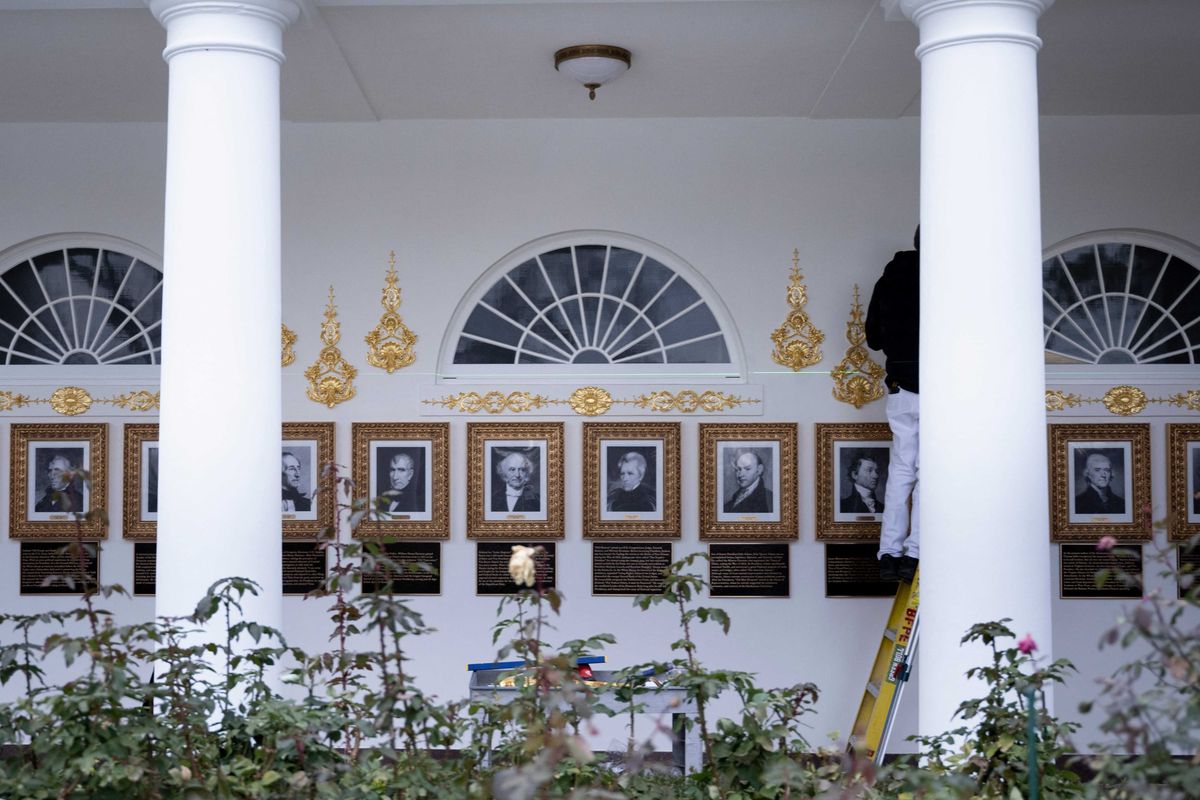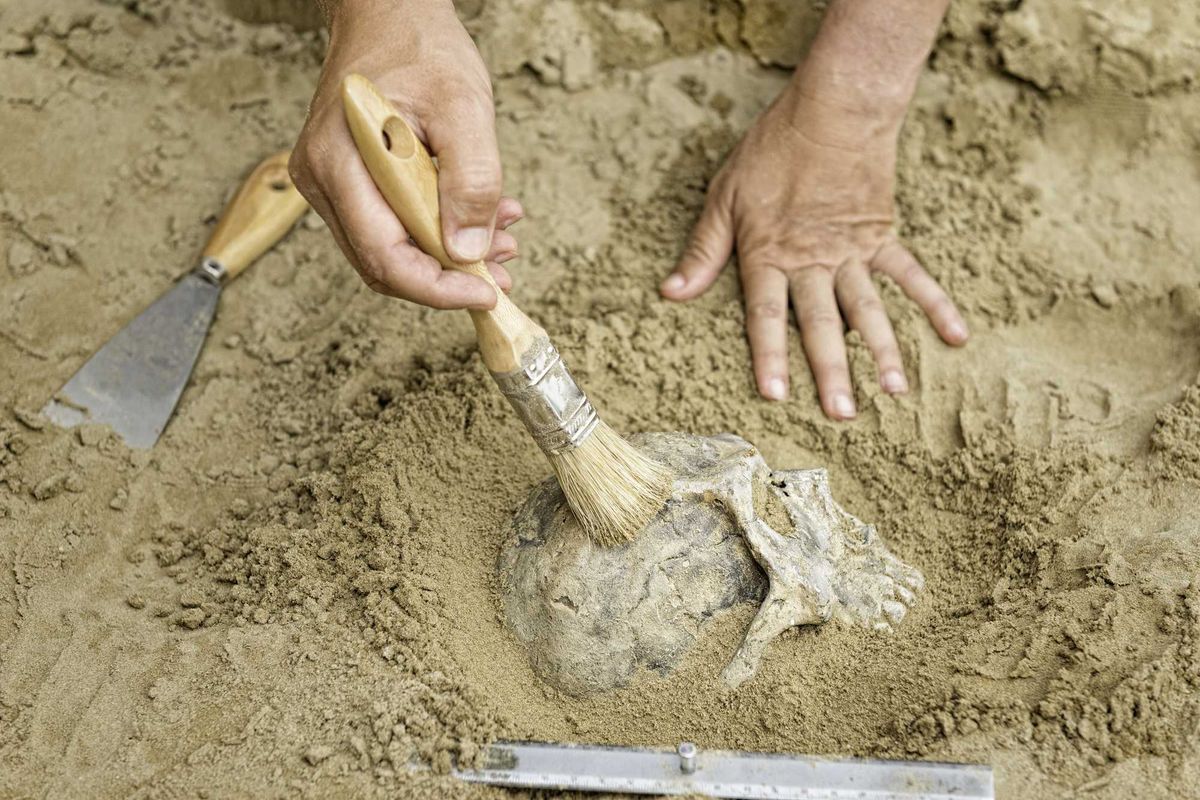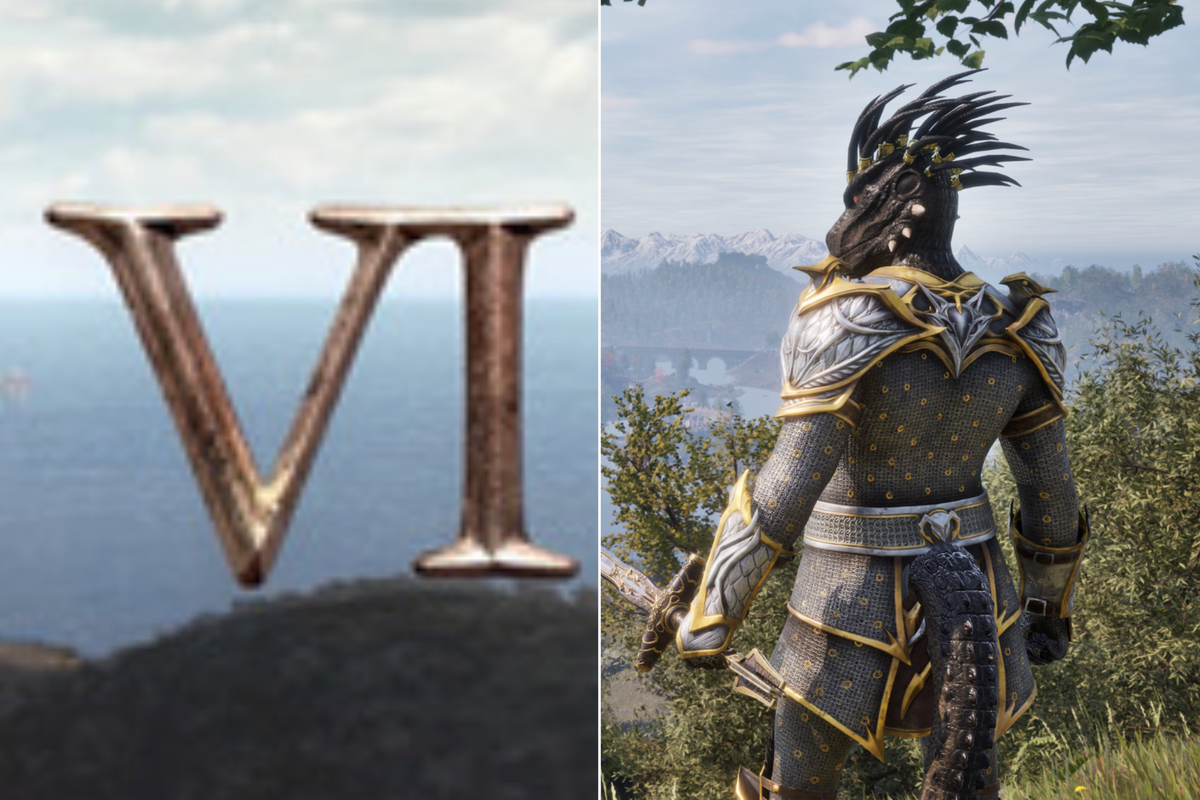Catherine Shuttleworth
Feb 22, 2024

Archaeologists unearth ancient hand that could unlock secrets of language
Antiquity / Aiestaran, M. et al.
A 2,000 year old bronze hand has been discovered in the north of Spain by researchers, and the most intriguing aspect about it is the strange symbols that cover the hand.
Across the top of the hand, researchers noticed four lines of strange symbols are inscribed. With a new study suggesting the symbols are related to ancient Paleohispanic languages, and may have been part of the language that has developed into Basque in contemporary Spain.
The hand was discovered in an area populated by a tribe called the Vascones at the time the hand was likely to have been made. Previous assumptions about the tribe believed them to be pre-literate as little writing samples have been found before. But this hand could change that.
"Detailed linguistic analysis suggests that the script represents a graphic subsystem of Palaeohispanic that shares its roots with the modern Basque language and constitutes the first example of Vasconic epigraphy," write the researchers in their published paper.
The small hole in the object, along with the script's orientation, makes researchers believe it may have been hung by the entrance of a building.
Based on the identifiable words and comparisons with other artefacts, researchers believe the language is comprised of a "distinct sub-system".
The text is not fully translatable, but researchers found interesting parallels with modern Basque. One of the key links being the first word on the hand: sorieneku. Which is similar to the Basque word zorioneko, which means of good fortune. Giving an insight into the meaning of the message on the hand, as well as the connections to Basque.
"The text inscribed on this artifact, which was found at the entrance of a domestic building, is interpreted as apotropaic, a token entreating good fortune," write the researchers.
Several Iron Age artefacts that also depict the back of an open right hand have been discovered in the Vasconic and Iberian areas. Researchers believe the hand to be crafted at the site it was found, as bronze is a common material in the area.
Researchers say the inconsistencies in the lettering suggests an unplanned and careless approach to the writing. Research on the Hand of Irulegi, named after the site it was found at, continues, especially to find out what more the hand can tell us about the Vascones - specifically in terms of a written language that dates before the arrival of the Romans.
"The new inscription presented here provides support for a growing awareness that the ancient Vascones knew and made use of writing, at least to a degree," write the researchers.
Sign up to our free Indy100 weekly newsletter
Have your say in our news democracy. Click the upvote icon at the top of the page to help raise this article through the indy100 rankings.
How to join the indy100's free WhatsApp channel
Top 100
The Conversation (0)













